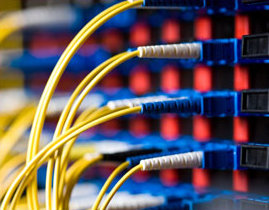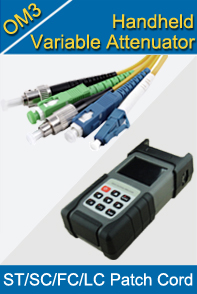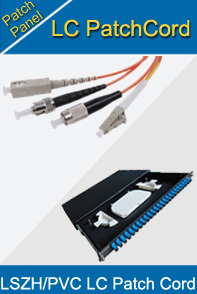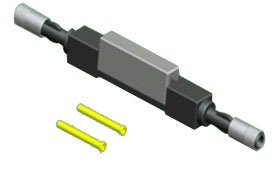-

- Sopto Home
-

- Special Topic
-

- Patch Cord Knowledge
-

- Fiber Optic Couplers Introduction
Patch Cord Knowledge
- Fiber Optic Connector Ferrule Design
- Fiber Optic Connector Design
- E2000 to ST Fiber Patch Cable Overview
- Acceptable and Unacceptable Fiber Connector End-Face Finishes
- Using Wipes and Cleaning Cassettes to Clean Fiber Patch Cords
- Not-Too-Tight Mating of Fiber Optic Connectors
- Matching Gel and Oils Contamination about Fiber Optic Connectors
- The Effect of Improper Use of Fiber Optic Connectors
- Why Fiber Optic Connectors are Fragile?
SOPTO Special Topic
Certificate



Guarantee
Except products belongs to Bargain Shop section, all products are warranted by SOPTO only to purchasers for resale or for use in business or original equipment manufacturer, against defects in workmanship or materials under normal use (consumables, normal tear and wear excluded) for one year after date of purchase from SOPTO, unless otherwise stated...
Return Policies
Defective products will be accepted for exchange, at our discretion, within 14 days from receipt. Buyer might be requested to return the defective products to SOPTO for verification or authorized service location, as SOPTO designated, shipping costs prepaid. .....
Applications
 Fiber Patch Cords have a widely application. Where the need for the optical fiber connection, where you need fiber optic patch cords.
Fiber Patch Cords have a widely application. Where the need for the optical fiber connection, where you need fiber optic patch cords.
Testing Equipment
FTTX+ LAN
Optical Fiber CATV
Optical Communication System
Telecommunication
SOPTO Products
- Fiber Optic Transceiver Module
- High Speed Cable
- Fiber Optical Cable
- Fiber Optical Patch Cords
- Splitter CWDM DWDM
- PON Solution
- FTTH Box ODF Closure
- PCI-E Network Card
- Network Cables
- Fiber Optical Adapter
- Fiber Optical Attenuator
- Fiber Media Converter
- PDH Multiplexers
- Protocol Converter
- Digital Video Multiplexer
- Fiber Optical Tools
- Compatible
Related Products
Performance Feature
Good Water-proof
Low insertion loss;
low reflection loss;
Stability, good repeatability;
High-precision ceramic ferrule;
Compatible with NTT standard;
Precision Grinding and fully testing;
Compliance with international standards
Patch Cord Knowledge
Recommended


Fiber Optic Couplers Introduction
A fiber optic coupler is a device used in fiber optic systems with single or more input fibers and single or several output fibers, which is different from WDM devices. WDM multiplexer and demultiplexer divide the different wavelength fiber light into different channels, while fiber optic couplers divide the light power and send it to different channel.
Bandwidth
Most types of couplers work only in a limited range of wavelength (a limited bandwidth), since the coupling strength is wavelength-dependent (and often also polarization-dependent). This is a typical property of those couplers where the coupling occurs over a certain length. Typical bandwidths of fused couplers are a few tens of nanometers. In high-power fiber lasers and amplifiers, multimode fiber couplers are often used for combining the radiation of several laser diodes and sending them into inner cladding of the active fiber.

Structure
A basic fiber optic coupler has N input ports and M output ports. N and M typically range from 1 to 64. M is the number of input ports (one or more). N is the number of output ports and is always equal to or greater than M. The number of input ports and output ports vary depending on the intended application for the coupler.

Some couplers use side-polished fibers, providing access to the fiber core. Couplers can also be made from bulk optics, for example in the form of microlenses and beam splitters, which can be coupled to fibers (“fiber pig-tailed”).
Types
Fiber optic couplers can either be passive or active devices. Passive fiber optic couplers are simple fiber optic components that are used to redirect light waves. Passive couplers either use micro-lenses, graded-refractive-index (GRIN) rods and beam splitters, optical mixers, or splice and fuse the core of the optical fibers together. Active fiber optic couplers require an external power source. They receive input signals, and then use a combination of fiber optic detectors, optical-to-electrical converters, and light sources to transmit fiber optic signals.
Types of fiber optic couplers include optical splitters, optical combiners, X couplers, star couplers, and tree couplers. The device allows the transmission of light waves through multiple paths.
Fused couplers are used to split optical signals between two fibers, or to combine optical signals from two fibers into one fiber. They are constructed by fusing and tapering two fibers together. This method provides a simple, rugged, and compact method of splitting and combining optical signals. Typical excess losses are as low as 0.2dB, while splitting ratios are accurate to within ±5 percent at the design wavelength. The devices are bi-directional, and offer low backreflection. The technique is best suited to single mode and multimode couplers.
Choices for fiber optic coupler also include Single window narrow band, Single window Wide band, and Dual window Wide band fiber optic coupler. Single window fiber optic coupler is with one working wavelength. Dual window fiber optic coupler is with two working wavelength. For Single mode fiber, is optimized for 1310 nm and 1550 nm; For Multimode fiber, is optimized for 850 nm and 1310 nm.
For more products’ information, please contact a Sopto representative by calling 86-755-36946668, or by sending an email to info@sopto.com.



